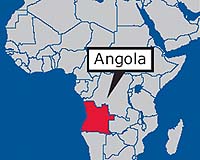 |
Paris (AFP) Dec 29, 2010 Capping the UN's International Year of Biodiversity, botanists in Britain and the United States on Wednesday unveiled a library of plant names aimed at helping conservationists, drug designers and agriculture researchers. The database, accessible at www.theplantlist.org, identifies 1.25 million names for plants, ranging from essential food crops such as wheat, rice and corn to garden roses and exotic jungle ferns, and provides links to published research. The aim is to clear up a century-old taxonomic jumble in which non-standard names sowed ignorance, rivalry and sometimes damaging confusion about the world's plant wealth. "Without accurate names, understanding and communication about global plant life would descend into inefficient chaos, costing vast sums of money and threatening lives in the case of plants used for food or medicine," Britain's Royal Botanic Gardens (RBG) said. The project brought together scores of experts at RBG's famous Kew Gardens in London with the Missouri Botanical Garden in St. Louis. It traces its origins to a 1999 botanical congress which called for a clear picture of plant biodiversity to help preserve species under threat. The Plant List is described as a working list that will require finetuning. "(It) is really a major step forward," said Peter Wyse Jackson, president of the Missouri Botanical Garden. "It provides for the first time a basic checklist of what plants there are on the planet, and it can be used for so many purposes, planning conservation, action looking at the economic importance of plants and so on." Of the 1.25 million names, 1.04 million are of species rank while the remainder are "infraspecific," meaning they are families or sub-groups of species. The longest name is Ornithogalum adseptentrionesvergentulum, for a group of species that includes the Star of Bethlehem' plant. The shortest names include Poa fax, or scaly poa, a purplish flower native to Western Australia. Only 300,000 names for species have been accepted as standard terms by the experts, and 480,000 others have been deemed "synonyms," or alternatives to accepted names. A whopping 260,000 names are "unresolved," meaning that data is too sketchy to determine swiftly whether the claim for a new plant find is backed by the facts. This part of the list will be whittled down by experts over the years to come. Under a plan adopted in Nagoya, Japan, last October, members of the UN's Biodiversity Convention agreed to set up a complete plant database by 2020. One in five of the world's known plant species is under threat of extinction, the International Union for Conservation of Nature (IUCN) said in September. Habitat loss, climate change, pollution and invasive species are the major perils.
Share This Article With Planet Earth
Related Links Farming Today - Suppliers and Technology
 Something fishy holds hope for Angola tourism
Something fishy holds hope for Angola tourismKissama Park, Angola (AFP) Dec 26, 2010 Post-war Angola may not stand out as a top African tourist destination but adventure anglers fishing for the giant tarpon look set to put the country back on the visitors map. The powerful game fish, which can weigh more than 100 kilogrammes (220 pounds), is mainly found in the waters of the Atlantic Ocean, a prized catch among avid sport fishermen. The area around the mouth of the Kwanz ... read more |
|
| The content herein, unless otherwise known to be public domain, are Copyright 1995-2010 - SpaceDaily. AFP and UPI Wire Stories are copyright Agence France-Presse and United Press International. ESA Portal Reports are copyright European Space Agency. All NASA sourced material is public domain. Additional copyrights may apply in whole or part to other bona fide parties. Advertising does not imply endorsement,agreement or approval of any opinions, statements or information provided by SpaceDaily on any Web page published or hosted by SpaceDaily. Privacy Statement |